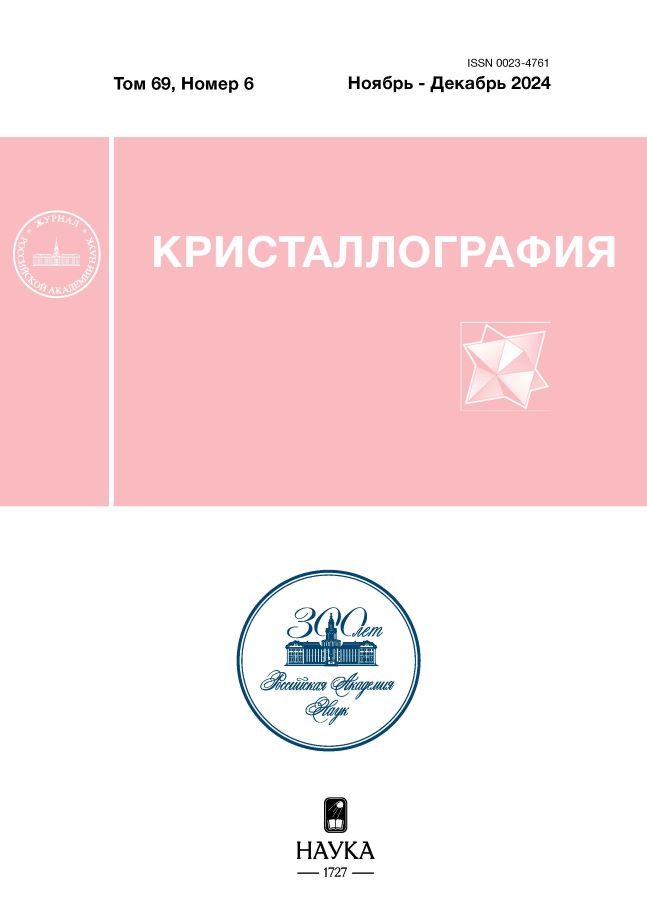Effect of different gaseous mediums in the process of microwave pyrolysis carbonization of cellulose on the properties of the obtained activated carbon
- Autores: Dyachkova I.G.1, Zolotov D.A.1, Kumskov A.S.1, Volchkov I.S.1, Matveev E.V.2, Berestov V.V.2, Asadchikov V.E.1
-
Afiliações:
- Shubnikov Institute of Crystallography of Kurchatov Complex of Crystallography and Photonics of NRC “Kurchatov Institute
- FSBSI “Research Institute of Advanced Materials and Technologies”
- Edição: Volume 69, Nº 6 (2024)
- Páginas: 960-970
- Seção: STRUCTURE OF ORGANIC COMPOUNDS
- URL: https://ruspoj.com/0023-4761/article/view/673617
- DOI: https://doi.org/10.31857/S0023476124060052
- EDN: https://elibrary.ru/YHVJLA
- ID: 673617
Citar
Texto integral
Resumo
A comparative study of the characteristics of high-molecular organic matter (cotton lint) subjected to pyrolytic carbonisation under conditions of high-intensity microwave radiation in various gaseous media (N2, CO2, Ar) has been conducted. The methods employed included the determination of adsorption activity through the use of a methylene blue indicator, X-ray fluorescence analysis, transmission electron microscopy with microanalysis, and X-ray phase analysis. Electrodes derived from carbon materials produced through microwave carbonisation with varying gases were constructed, and symmetric cells were assembled in accordance with the two-electrode configuration. The electrochemical properties were investigated using cyclic voltammetry and galvanostatic charge-discharge methods. The results demonstrated that the materials obtained using a CO₂ gaseous medium exhibited the most optimal characteristics.
Texto integral
Sobre autores
I. Dyachkova
Shubnikov Institute of Crystallography of Kurchatov Complex of Crystallography and Photonics of NRC “Kurchatov Institute
Autor responsável pela correspondência
Email: sig74@mail.ru
Rússia, Moscow
D. Zolotov
Shubnikov Institute of Crystallography of Kurchatov Complex of Crystallography and Photonics of NRC “Kurchatov Institute
Email: sig74@mail.ru
Rússia, Moscow
A. Kumskov
Shubnikov Institute of Crystallography of Kurchatov Complex of Crystallography and Photonics of NRC “Kurchatov Institute
Email: sig74@mail.ru
Rússia, Moscow
I. Volchkov
Shubnikov Institute of Crystallography of Kurchatov Complex of Crystallography and Photonics of NRC “Kurchatov Institute
Email: sig74@mail.ru
Rússia, Moscow
E. Matveev
FSBSI “Research Institute of Advanced Materials and Technologies”
Email: sig74@mail.ru
Rússia, Moscow
V. Berestov
FSBSI “Research Institute of Advanced Materials and Technologies”
Email: sig74@mail.ru
Rússia, Moscow
V. Asadchikov
Shubnikov Institute of Crystallography of Kurchatov Complex of Crystallography and Photonics of NRC “Kurchatov Institute
Email: sig74@mail.ru
Rússia, Moscow
Bibliografia
- Савельева Ю.Р., Кряжов А.Н., Богомолов М.С. и др. // Химия растительного сырья. 2003. № 4. С. 61.
- Yakout S., El-Deen G.S. // Arab. J. Chem. 2016. V. 9. P. 1155. https://doi.org/10.1016/j.arabjc.2011.12.002
- Kosheleva R.I., Mitropoulos A.C., Kyzas G.Z. // Environ. Chem. Lett. 2019. V. 17. P. 429. https://doi.org/10.1007/s10311-018-0817-5
- Yahya M.A., Al-Qodah Z., Ngah C.W.Z. // Renew. Sust. Energ. Rev. 2015. V. 46. P. 218. https://doi.org/10.1016/j.rser.2015.02.051
- Асадчиков В.Е., Дьячкова И.Г., Золотов Д.А. и др. // Кристаллография. 2022. Т. 67. № 4. С. 597. https://doi.org/10.31857/S002347612204004X
- Дьячкова И.Г., Золотов Д.А., Кумсков А.С. и др. // Успехи физ. наук. 2023. T. 193. № 12. C. 1325. https://doi.org/10.3367/UFNr.2023.02.039323
- Villota E.M., Lei H., Qian M. et al. // ACS Sustainable Chem. Eng. 2018. V. 6. № 1. P. 1318. https://doi.org/10.1021/acssuschemeng.7b03669
- Gopinath A., Kadirvelu K. // Environ. Chem. Lett. 2018. V. 16. P. 1137. https://doi.org/10.1007/s10311-018-0740-9
- ГОСТ 4453-74 “Уголь активный осветляющий древесный порошкообразный: технические условия”: Государственный стандарт Союза ССР: дата введения 01.01.1976. М.: Издательство стандартов, 1993. 21 с.
- Асадчиков В.Е., Бузмаков А.В., Дымшиц Ю.М. и др. Установка для топо-томографических исследований образцов. Пат. № 2674584 (Россия). 2018.
- Gates-Rector S., Blanton T. // Powder Diffr. 2019. V. 34. № 4. P. 352. https://doi.org/10.1017/S0885715619000812
- Ardizzone S., Fregonara G., Trasatti S. // Electrochim. Acta. 1990. V. 35. № 1. P. 263. https://doi.org/10.1016/0013-4686(90)85068-X
- Bartelmess J., Giordani S. // Beilstein J. Nanotechnol 2014. V. 5. № 1. P. 1980. https://doi.org/10.3762/bjnano.5.207
- Zeiger M., Jäckel N., Mochalin V.N., Presser V. // J. Mater. Chem. A. 2016. V. 4. № 9. P. 3172. https://doi.org/10.1039/c5ta08295a
- Дьячкова И.Г., Золотов Д.А., Кумсков А.С. и др. // ЖТФ. 2024. T. 94. № 6. C. 871. https://doi.org/10.61011/JTF.2024.06.58128.266-23
- Trucano P., Chen R. // Nature. 1975. V. 258. P. 136. https://doi.org/10.1038/258136a0
- Kratschmer W., Lamb L., Fostiropoulos K., Huffman D. // Nature. 1990. V. 347. P. 354. https://doi.org/10.1038/347354a0
- Rao G.N., Sastry V.S., Premila M. et al. // Powder Diffr. 1996. V. 11. № 1. P. 5. https://doi.org/10.1017/S0885715600008782
- Самонин В.В., Никонова В.Ю., Ким А.Н., Грун Н.А. // Изв. СПбГТИ (ТУ). 2010. № 8. С. 77.
- Березкин В.И., Викторовский И.В., Вуль А.Я. и др. // Физика и техника полупроводников. 2003. Т. 37. № 7. С. 802.
- Fayos J. // J. Solid State Chem. 1999. V. 148. № 2. P. 278. https://doi.org/10.1006/jssc.1999.8448
- Correia S.F., Fu L., Dias L.M. et al. // Nanoscale Adv. 2023. V. 5. № 13. P. 3428. https://doi.org/10.1039/d3na00136a
Arquivos suplementares





















